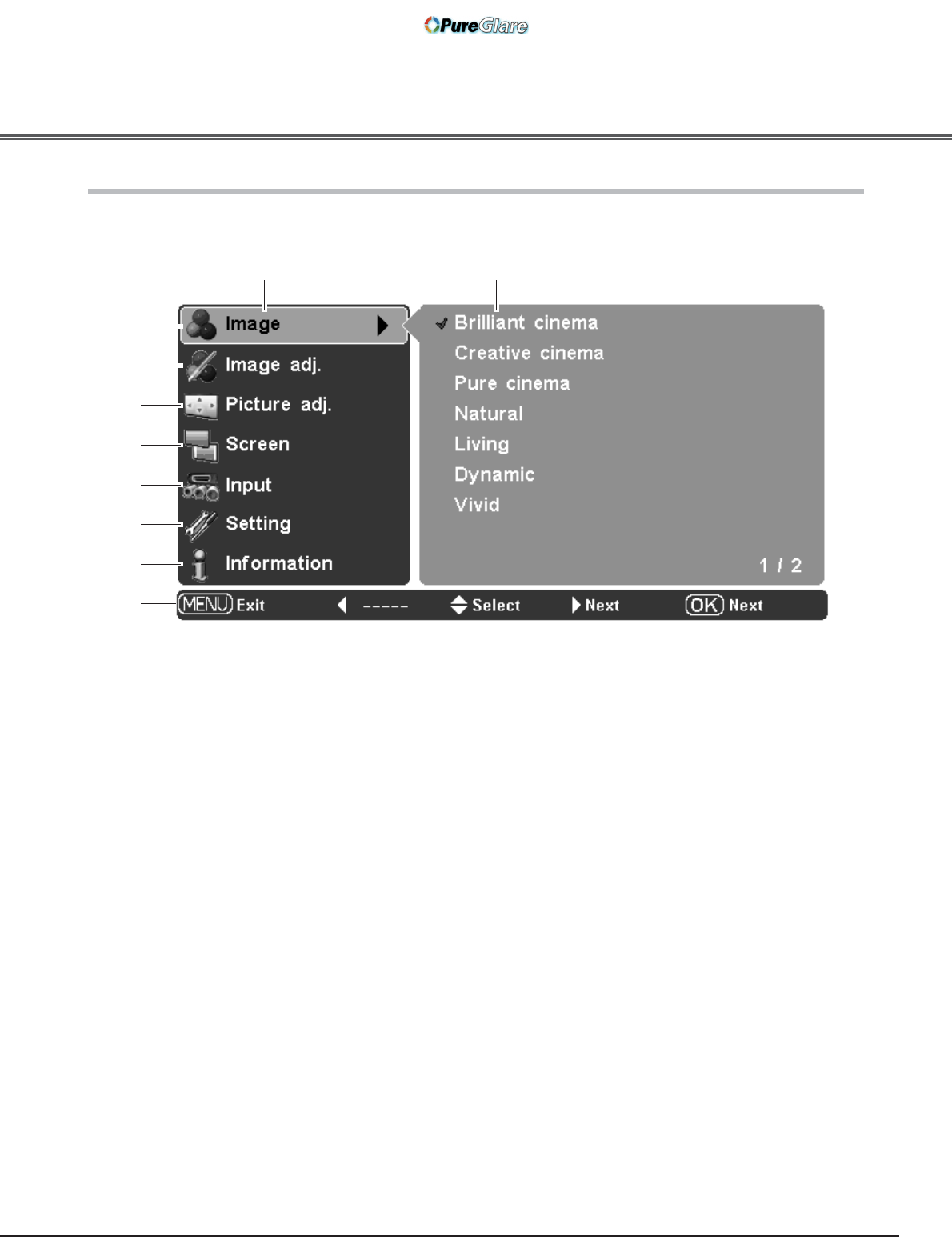
21
Menu and its Functions
D
J
8
E
G
L
H
<
D Image
Select an image mode from among Brilliant cinema, Creative cinema, Pure cinema, Natural, Living,
Dynamic, Vivid, and User image 1 – 7 (p.27).
J
Image adj.
Adjust Brightness, Contrast, Color, Tint, Color temp., White balance (R/G/B), Sharpness, Lamp control,
Gamma, Progressive, Noise reduction, Advanced menu, Reset, and Store (pp.28 – 33).
8 Picture adj.
Select Overscan, Horizontal, Vertical, Auto adj., Fine sync, and Total dots to adjust the parameters to
match with the input signal format (p.34).
E Screen
Set the screen size; choose from Full, Full through, Zoom, Caption in, Normal, Normal through, Natural
wide 1, and Natural wide 2 (pp.35 – 36).
G Input
Select an input source from among Video, S-video, Component 1, Component 2, HDMI 1, HDMI 2 ,
and Computer. For Video and S-video inputs, choose a video system from AUTO, PAL, SECAM, NTSC,
NTSC4.43, PAL-M, and PAL-N (pp.24 – 26).
L Setting
Change various settings; Language, Advanced menu, Menu position, Ceiling, Rear, HDMI 1 setup, HDMI
2 setup, Background, Rename, Display, Logo, Power off confirmation, Capture, Power management,
Remote control, Shutter demo, Test pattern, Filter counter, Cleaning, Highland, Lamp counter reset,
Service port, and Factory default (pp.37 – 42).
H Information
Display the input source information: Input source, Signal, H-sync freq., V-sync freq., Deep color, Image
mode, Screen size, Lamp status, Lamp time and Filter time (p.43).
< Guide
The key operation is displayed.
Main Menu Sub-Menu
For the detailed menu contents, see the Menu Tree on pages 54 – 55.
Basic Operation
http://www.pureglare.com.au


















